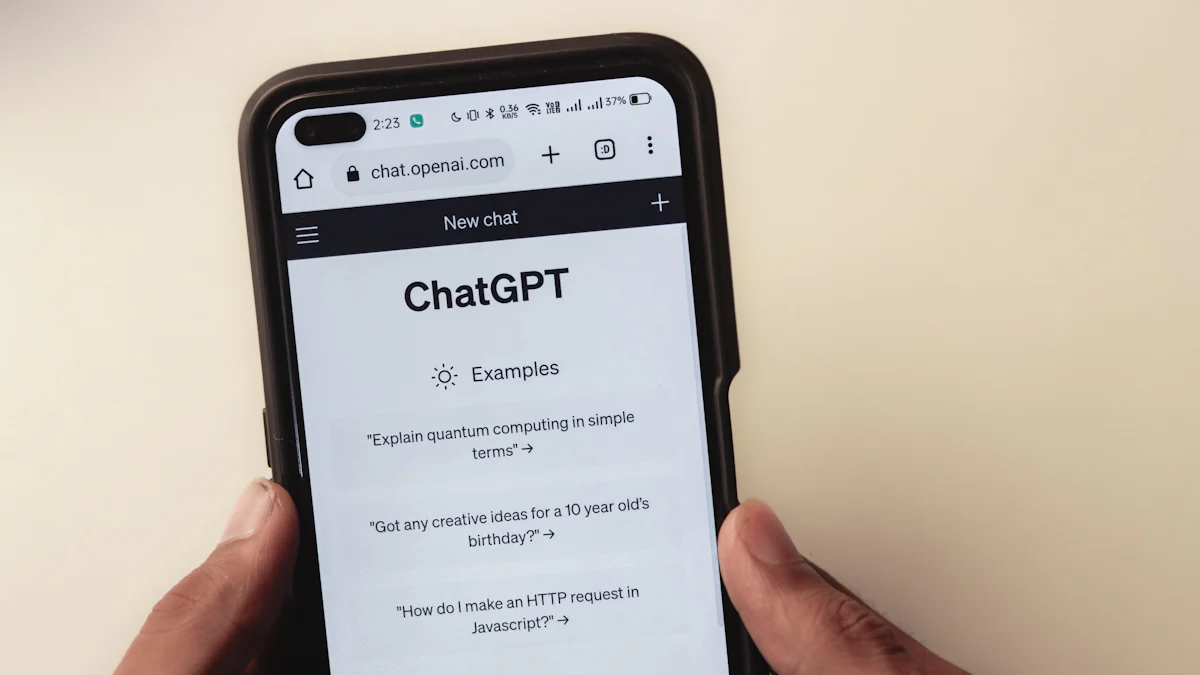WeChat vs WhatsApp: Evaluating ChatGPT and GPT-4 Capabilities

Messaging Platform Comparison
When it comes to messaging platforms, WeChat and WhatsApp are two of the most popular choices for users around the world. Both platforms offer a wide range of features and capabilities that cater to the needs of their diverse user base.
WeChat, often referred to as China's "super app," provides a comprehensive ecosystem that goes beyond messaging. In addition to text and voice messaging, it offers features such as mobile payments, social media functions, and mini-programs for various services.
On the other hand, WhatsApp is known for its straightforward messaging interface and end-to-end encryption, ensuring secure communication for its users. It also supports voice and video calls, file sharing, and group chats.
In this comparison, we will delve into the distinct features and capabilities of WeChat and WhatsApp to provide a comprehensive understanding of how they differ in meeting the needs of their users.
Exploring AI-Driven Features
AI Integration in Messaging
AI integration in messaging platforms has revolutionized the way users interact and communicate. By leveraging artificial intelligence, messaging platforms can offer advanced features that enhance user experience and streamline communication processes.
One of the key aspects of AI integration in messaging is its ability to analyze and understand user behavior and preferences. This enables platforms to provide personalized recommendations, predictive text input, and smart replies, making conversations more efficient and engaging for users.
Moreover, AI facilitates language translation within messaging apps, breaking down language barriers and enabling seamless communication between users from different linguistic backgrounds. This feature is particularly valuable for international users who rely on messaging platforms to connect with friends, family, or colleagues across the globe.
The implementation of AI-driven chatbots is another significant advancement in messaging platforms. Chatbots powered by AI technology can handle various tasks such as answering frequently asked questions, providing customer support, and even initiating transactions within the messaging interface. This automation streamlines processes for businesses and improves overall user convenience.
Advancements in ChatGPT and GPT-4
ChatGPT and GPT-4 represent significant advancements in natural language processing (NLP) capabilities. These AI models have the capacity to generate human-like responses based on the context of a conversation, leading to more coherent and contextually relevant interactions within messaging platforms.
The capabilities of ChatGPT and GPT-4 extend beyond simple text-based responses. They can comprehend complex queries, engage in multi-turn conversations, and adapt their responses based on the evolving context of a conversation. This level of sophistication contributes to more natural and intuitive interactions between users and AI-powered chatbots or virtual assistants.
The impact of these advancements is evident in the enhanced conversational experiences they enable within messaging platforms. Users can benefit from more accurate responses, contextual understanding of their queries, and an overall improvement in the quality of interactions facilitated by AI-driven technologies.
AI Integration: The integration of artificial intelligence has significantly transformed user experiences within messaging platforms by enabling personalized recommendations, language translation capabilities, and the deployment of advanced chatbots.
Role of NLP in Messaging
Understanding Natural Language Processing
Natural Language Processing (NLP) plays a crucial role in enhancing user interactions within messaging platforms. It involves the use of AI and machine learning to enable computers to understand, interpret, and respond to human language in a way that is both meaningful and contextually relevant.
The integration of NLP in messaging platforms contributes to personalized messaging experiences by allowing the system to comprehend user queries, extract relevant information, and generate appropriate responses. This capability enhances the overall user experience by providing more intuitive and efficient interactions.
NLP also enables messaging platforms to analyze sentiment, identify key topics within conversations, and facilitate content recommendations based on individual preferences. These functionalities contribute to creating engaging and tailored messaging experiences for users, ultimately improving user satisfaction and retention.
NLP in WeChat and WhatsApp
In both WeChat and WhatsApp, NLP plays a significant role in enabling advanced features that enhance user engagement. These features include smart replies, predictive text input, language translation, and sentiment analysis. By leveraging NLP capabilities, both platforms can offer seamless communication experiences that cater to the diverse needs of their global user base.
WeChat's integration of NLP extends beyond basic language processing to support its multifaceted ecosystem. It enables personalized recommendations for mini-programs, facilitates content curation based on user interests, and powers intelligent chatbot interactions within the app.
Similarly, WhatsApp utilizes NLP to enhance its messaging capabilities by offering features such as smart message suggestions, language translation for international users, and context-aware replies that adapt to the ongoing conversation. These NLP-driven features contribute to making conversations more fluid and natural for WhatsApp users.
Messaging Platform Differences
Feature Comparison
When comparing the key features of WeChat and WhatsApp, several distinctions become apparent. WeChat's feature set extends beyond traditional messaging, offering functionalities such as mobile payments, social media integration, and mini-programs for various services. In contrast, WhatsApp focuses primarily on messaging, voice and video calls, file sharing, and group chats.
WeChat's multifaceted ecosystem provides a one-stop solution for users, allowing them to seamlessly transition between communication and other activities such as making payments or accessing services within the app. On the other hand, WhatsApp prioritizes secure and straightforward messaging experiences without the additional complexities of an integrated ecosystem.
The differences in messaging capabilities are evident in WeChat's emphasis on creating a comprehensive digital lifestyle platform compared to WhatsApp's focus on providing a secure and reliable messaging environment.
User Experience Variations
The user experience variations between WeChat and WhatsApp stem from their distinct approaches to integrating AI and NLP into their platforms. WeChat's incorporation of AI-driven features extends across its entire ecosystem, enabling personalized recommendations for services, content curation based on user preferences, and intelligent chatbot interactions.
Conversely, while WhatsApp also leverages AI and NLP for smart message suggestions, language translation, and context-aware replies, its primary focus remains on delivering a seamless messaging experience with a strong emphasis on end-to-end encryption for privacy.
The impact of AI and NLP on user interactions is reflected in how both platforms cater to the diverse needs of their users. WeChat's holistic approach integrates advanced technologies into various aspects of its platform to create an immersive digital experience. In contrast, WhatsApp maintains a laser focus on refining the messaging experience while incorporating AI-driven features to enhance communication efficiency.
In essence, the differences in user experience are shaped by each platform's unique blend of features tailored to meet the evolving demands of their user base.
Significance of Chatbot Technology
Impact of Chatbot Technology
The significance of chatbot technology in messaging cannot be overstated. Chatbots, as automated messaging systems, play a pivotal role in enhancing user convenience within messaging platforms. These AI-powered virtual assistants are designed to handle a wide range of tasks, from providing instant responses to frequently asked questions to facilitating seamless transactions and delivering personalized recommendations.
Chatbots have revolutionized the way users interact with messaging platforms by offering immediate assistance and support around the clock. They contribute to improved response times, efficient query resolution, and overall user satisfaction. Moreover, chatbots enable businesses to scale their customer support operations effectively while maintaining consistent service quality.
In addition to their role in customer service, chatbots also serve as valuable tools for streamlining various processes within messaging platforms. They can assist users in making reservations, accessing information, or even completing purchases without having to leave the messaging interface. This level of integration enhances user convenience and simplifies complex tasks through intuitive interactions.
The impact of chatbot technology extends beyond basic automation; it encompasses the transformation of user experiences by providing personalized and responsive interactions that cater to individual needs. As AI continues to advance, chatbots are expected to become even more sophisticated, further elevating the level of user engagement and satisfaction within messaging platforms.
Custom ChatGPT and GPT-4 Capabilities
The custom capabilities of ChatGPT and GPT-4 in chatbot technology represent a significant leap forward in AI-driven interactions within messaging platforms. These advanced language models empower chatbots to engage users in natural and contextually relevant conversations, mimicking human-like interactions with a high degree of accuracy.
ChatGPT and GPT-4's custom capabilities enable them to understand complex queries, provide nuanced responses tailored to specific contexts, and adapt their conversational style based on user preferences. This level of personalization contributes to more meaningful interactions that resonate with users on a deeper level.
Moreover, the role of AI in improving chatbot interactions is exemplified through the continuous learning and adaptation capabilities embedded within these models. ChatGPT and GPT-4 can analyze vast amounts of conversational data to refine their responses over time, ensuring that they evolve alongside user expectations and communication patterns.
As a result, the integration of ChatGPT and GPT-4 into chatbot technology raises the bar for user experiences within messaging platforms by delivering highly responsive, contextually aware, and engaging interactions that closely resemble human conversations.
Impact of AI Advancements
Enhanced User Interactions
The continuous advancements in Artificial Intelligence (AI) have significantly enhanced user interactions within messaging platforms. These AI-driven developments have led to more intuitive and personalized experiences for users, ultimately shaping the future of messaging as we know it.
One of the key ways in which AI advancements enhance user interactions is through the implementation of advanced chatbots and virtual assistants. These intelligent systems are now capable of understanding and responding to user queries with a level of nuance and context that was previously unattainable. As a result, users experience more natural and meaningful conversations, leading to higher engagement and satisfaction.
Moreover, AI has enabled messaging platforms to offer proactive assistance to users based on their preferences and behaviors. Through predictive analytics and machine learning algorithms, platforms can anticipate user needs and provide relevant suggestions or information in real-time, creating a seamless and efficient communication experience.
Looking ahead, the future of AI-driven messaging experiences holds the promise of even deeper personalization and contextual understanding. As AI continues to evolve, messaging platforms will likely integrate more sophisticated capabilities such as emotion recognition, adaptive content delivery, and anticipatory responses, further elevating the quality of user interactions.
AI's Role in Future Messaging Platforms
The evolving role of AI in shaping future messaging platforms is poised to revolutionize how individuals communicate and engage with each other. Anticipated advancements in AI-driven messaging include the seamless integration of augmented reality (AR) features into messaging interfaces, allowing users to interact in immersive virtual environments.
Furthermore, AI will play a pivotal role in enabling hyper-personalization within messaging platforms. By leveraging data insights and behavioral analysis, AI will empower platforms to deliver tailored content, recommendations, and services that align closely with each user's preferences and communication patterns.
As these advancements unfold, we can expect messaging platforms to become more than just channels for text-based communication. They will evolve into dynamic ecosystems that cater to diverse forms of interaction including voice commands, visual inputs, and interactive experiences facilitated by advanced AI technologies.
In essence, the evolution of AI in messaging platforms holds vast potential for transforming how individuals connect with each other across the digital landscape.
Assessing WeChat vs WhatsApp
When assessing the capabilities and features of WeChat and WhatsApp, it becomes evident that both platforms offer unique strengths and cater to diverse user preferences. The comparison between WeChat and WhatsApp extends beyond basic messaging functionalities, encompassing a wide array of features that shape the overall user experience.
WeChat's comprehensive ecosystem sets it apart by integrating messaging with mobile payments, social media functions, and mini-programs for various services. This multifaceted approach positions WeChat as a lifestyle platform that seamlessly blends communication with daily activities such as financial transactions and social interactions.
On the other hand, WhatsApp distinguishes itself through its emphasis on secure messaging coupled with voice and video calls, file sharing, and group chats. Its commitment to end-to-end encryption ensures privacy while offering essential communication features in a straightforward interface.
AI-Driven Technologies Comparison
In terms of AI-driven technologies, both WeChat and WhatsApp leverage artificial intelligence to enhance user interactions. WeChat's integration of AI spans across its ecosystem, providing personalized recommendations for services, content curation based on user preferences, and intelligent chatbot interactions. Conversely, while WhatsApp also utilizes AI for smart message suggestions, language translation, and context-aware replies, its primary focus remains on delivering a secure messaging experience.
The comparison between WeChat and WhatsApp underscores the diverse approaches taken by each platform in integrating AI-driven technologies to meet the evolving needs of their users. As these technologies continue to advance, both platforms are poised to shape the future of messaging experiences in distinct yet impactful ways.
See Also
The Influence of ChatGPT and GPT-4 on Booksy Customer Appointment Scheduling
Investigating the Advanced Features of ChatGPT: Can Chat GPT View Videos?
The Top AI Chatbots: NewOaks AI vs. SleekFlow - Which Prevails in 2024?
ChatGPT vs Watson Assistant: Which AI Chatbot Dominates in 2024?

